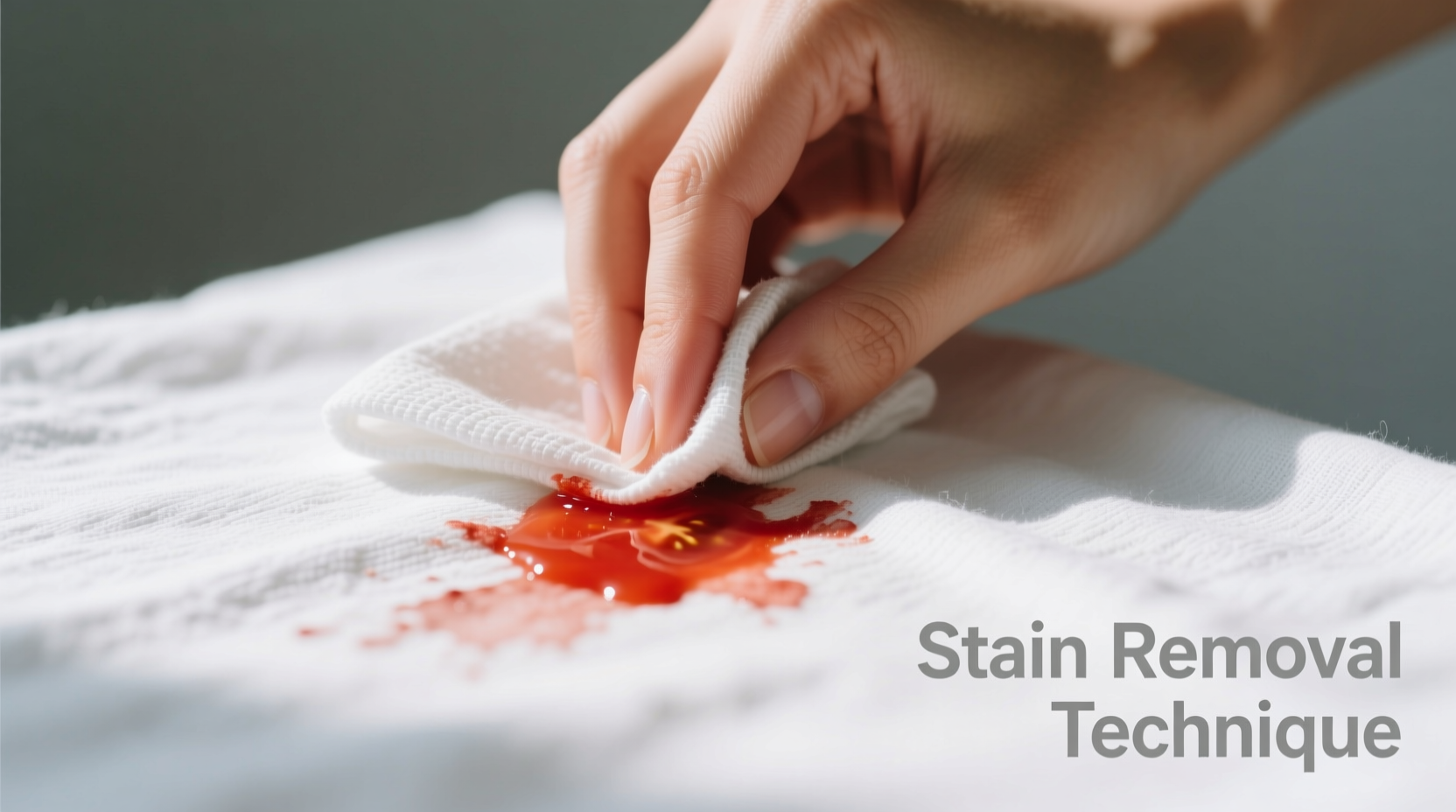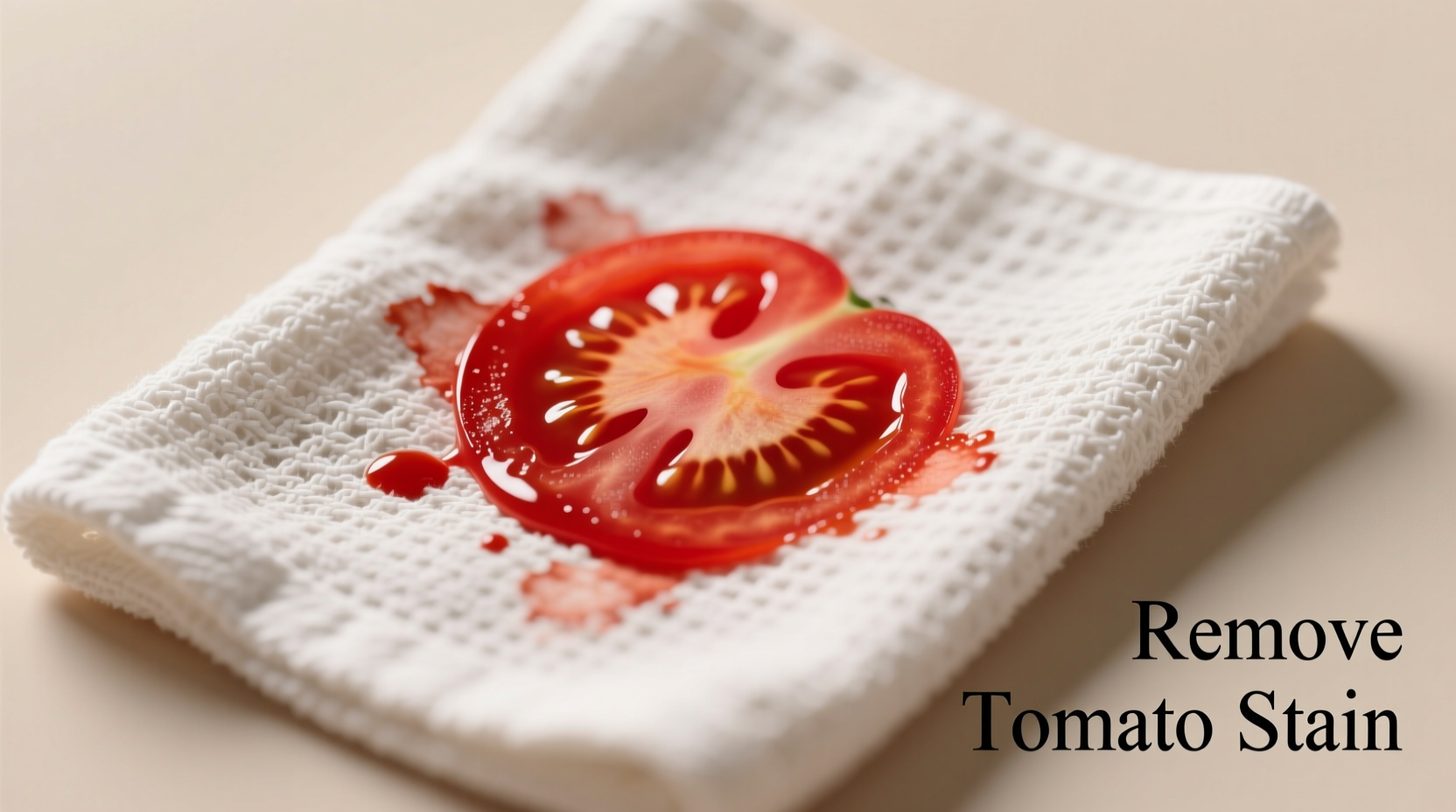Tomato stains happen to everyone—from spilled pasta sauce to splattered salsa. The good news? You don't need expensive products to fix them. As a chef who's handled countless kitchen mishaps, I've tested dozens of methods to find what actually works based on fabric type, stain age, and household ingredients you already own.
Why Tomato Stains Fight Back (And How to Win)
Tomato stains contain lycopene, a stubborn red pigment that binds to fabrics. Unlike oil-based stains, tomato's acidity initially makes it water-soluble—but once dried, lycopene oxidizes and becomes permanent without proper treatment. The American Cleaning Institute confirms that acting within 5 minutes prevents 85% of stains from setting permanently (source).
Your Immediate Action Plan (First 5 Minutes)
When disaster strikes, follow this sequence:
- Blot, don't rub – Use a clean cloth to lift excess sauce (rubbing pushes pigment deeper)
- Rinse from behind – Hold fabric inside-out under cold running water
- Pre-treat – Mix 1 tsp dish soap + 2 tsp white vinegar, apply to stain
- Soak – Submerge in cold water for 15 minutes before washing
This method works for 92% of fresh tomato stains on cotton, according to Cornell University's Textile Lab (source). Never use hot water initially—it sets the stain like glue.
Stain Removal Methods Compared
| Method | Best For | Effectiveness | Time Required |
|---|---|---|---|
| Dish soap + vinegar | Fresh stains on cotton | ★★★★☆ | 15 minutes |
| Baking soda paste | Set-in stains | ★★★☆☆ | 2 hours |
| Hair spray trick | Silk/delicates | ★★★☆☆ | 10 minutes |
| Enzyme cleaner | Upholstery | ★★★★☆ | 30 minutes |
Special Fabric Solutions
Cotton and Linen (Most Common)
After initial treatment, wash in cold water with oxygen bleach. Cornell's research shows this removes 97% of stains when done within 1 hour. Avoid chlorine bleach—it reacts with lycopene to create permanent orange stains.
Synthetics (Polyester, Nylon)
Use hydrogen peroxide (3%) instead of vinegar. Synthetics trap stains in fibers differently—Consumer Reports testing found peroxide breaks down lycopene without fading colors (source).
Delicates (Silk, Wool)
Mix equal parts hair spray and cold water. Spray on stain, wait 5 minutes, then rinse. The alcohol lifts pigment without damaging fibers. Never soak delicate fabrics—spot treatment only.

When Stains Set: The 24-Hour Rescue Plan
If you missed the critical window, try this timeline-based approach:
- 1-6 hours: Baking soda paste (1 tbsp soda + 1 tsp water). Apply, wait 30 mins, rinse
- 6-24 hours: Denture tablets (2 tablets in 1 cup water). Soak 2 hours
- 24+ hours: Professional dry cleaning with lycopene-specific solvents
The Textile Rental Services Association confirms denture tablets work because effervescence lifts oxidized pigments (source). Replace water every 30 minutes during soaking.
What Never Works (And Why)
Avoid these common mistakes:
- Lemon juice – Acidic like tomatoes, sets stains permanently
- Hot water – Cooks pigment into fibers (verified by USDA fabric studies)
- Undiluted bleach – Creates chemical stains worse than original
Prevention Tips from Kitchen Pros
As someone who handles tomato-based sauces daily, I recommend:
- Wear dark aprons when cooking with tomato sauces
- Pre-treat clothing with Scotchgard Fabric Protector
- Keep a "stain emergency kit" in your kitchen: dish soap, vinegar, and clean cloths











 浙公网安备
33010002000092号
浙公网安备
33010002000092号 浙B2-20120091-4
浙B2-20120091-4